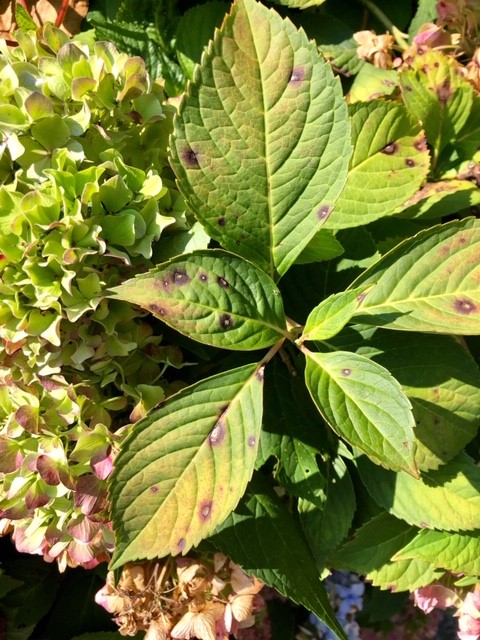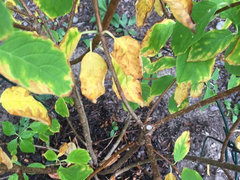The 8-Minute Rule for Hydrangea Leaves Turning Yellow
Little Known Questions About Hydrangea Leaves Turning Yellow.
Table of ContentsHydrangea Leaves Turning Yellow for DummiesThe 7-Minute Rule for Hydrangea Leaves Turning YellowThe Facts About Hydrangea Leaves Turning Yellow UncoveredThe Basic Principles Of Hydrangea Leaves Turning Yellow Some Known Facts About Hydrangea Leaves Turning Yellow.The Best Guide To Hydrangea Leaves Turning Yellow
One opportunity is that the plant is not obtaining adequate sunshine. During the winter season months, the days are much shorter, and the sunlight is not as intense, so ensure to position your Hydrangea in a place where it will certainly obtain at the very least 6 hours of sunshine every day. Another factor for Hydrangea yellow fallen leaves in winter might be way too much water.The leaves might be turning yellow due to temperature level stress. Hydrangeas like cooler temperatures, so if the plant is in a spot that obtains too warm or also chilly, the leaves will turn yellow. If you think temperature stress and anxiety may be the issue, attempt relocating your Hydrangea to a various area or protecting it from the aspects with a cloth wrap.
New growth will certainly be observed in early springtime, when you'll discover environment-friendly foliage sprouting from stems that could have shown up dead. If your leaves are transforming brownish in spring or summer season, there are likely various other variables at play (Hydrangea Leaves Turning Yellow). The accurate reasons rely on the range and their expanding conditions, yet in basic, brown hydrangea fallen leaves suggest dehydration and wilting in the heat
Hydrangea Leaves Turning Yellow Fundamentals Explained

Wilting is triggered by absence of dampness, meaning there are a couple of excellent techniques to make use of to stop this from happening. Provide your hydrangeas a healthy and balanced glug of water every few days when the temperature levels are climbing high, and deal with the dirt to better retain wetness. After sprinkling, a dab of mulch around the base of each plant should aid with this by maintaining dampness in the soil.
This disrupts fungi spores from clearing up. "The Botrytis fungi flourishes in cool and wet conditions, so stay clear of showering the entire plant when sprinkling and simply water at the roots," shares Roy Nicol, a Master Green thumb. If you've missed out on the chance for prevention and are handling an infection you need to get rid of all dead or significantly infected leaves from the plant and destroy them to stop further spread.
Unknown Facts About Hydrangea Leaves Turning Yellow
As a basic guideline, we recommend eliminating leaves when they are 50% brownish or greater. While browning caused by any factor can not be reversed, taking the restorative activity explained above will motivate the plant to expand new leaves so the harmed leaves either diminish naturally or can be removed by the gardener.
Hydrangeas should be watered only when the top few inches of soil are completely dry, and must be provided a detailed saturating each time. Underwatered hydrangeas are likely to have yellow, wilting, and sagging fallen leaves. Boost the regularity and quantity of watering for your bush to assist fix this problem. Hydrangeas favor relatively moist (but not soaked) dirt, so provide the roots a good saturating and permit water to be soaked up right into the soil prior to using extra.
The means you repair hydrangea leaves transforming yellow depends upon the key problem creating the yellow fallen leaves. This can be difficult to determine, once you do you will certainly have the ability to adjust your plant care appropriately to look after the trouble. As mentioned before, an usual issue with hydrangeas is vitamins and mineral deficiencies.
Not known Facts About Hydrangea Leaves Turning Yellow
During the height expanding season, you should water at a rate of regarding 1 inch weekly. If you are bothered with not appropriately watering your hydrangeas, there are a number of things you can do. Including mulch to the base of the plants over the root zone help to manage the temperature around the shrub and preserve water in the dirt.
You can buy and why not check here set up straightforward watering worlds. Sprinkling globes hold water in them and slowly release this water right into the dirt as the ground ends up being completely dry. Simply load the world with learn the facts here now water, stick the spout right into the dirt within the origin zone near the base of the plant, and leave it in position until all the water is gone.
If it is as well serious, some plants will never recuperate from transplant shock and will certainly remain to decrease until they die. Reduce transplant shock by including as several roots as feasible when excavating up your plant to relocate. Be certain to supply even more water than typical in the weeks following planting to aid your plant recoup and expand brand-new roots.
Hydrangea Leaves Turning Yellow Can Be Fun For Anyone
To prevent spreading fungal conditions, make sure to thouroughly tidy and disinfect any trimming devices before and after use. You can attempt to purge the origins with water to eliminate excess fertlizer.
Your hydrangea plant likes well-drained, damp dirt. If the pot has bad water drainage, or your soil is flooded, the fallen leaves will start to turn yellow.
If you do not water your hydrangea plant for even more than a week, the leaves will begin transforming yellow. Fungal conditions that attack the plants have a tendency to show join the origins and the fallen leaves of the plant. Among these diseases is root rot, which makes it tough for the plant visit site to feed correctly.
Facts About Hydrangea Leaves Turning Yellow Uncovered
